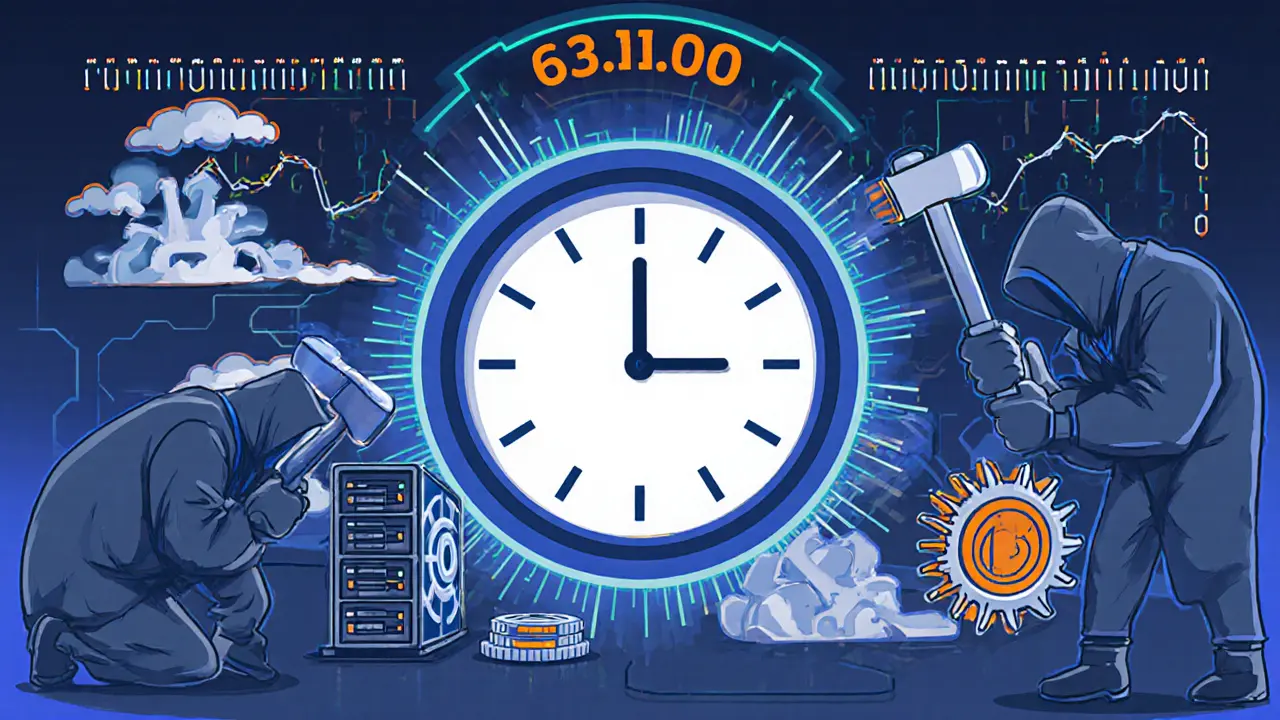Bitcoin Difficulty Adjustment: How Mining Power Shapes Bitcoin's Supply
When you mine Bitcoin, a decentralized digital currency that runs on a public ledger called the blockchain. Also known as BTC, it’s designed to release new coins at a predictable rate—roughly every 10 minutes. But what happens when more miners join the network? Or when powerful farms shut down? That’s where Bitcoin difficulty adjustment, a built-in mechanism that automatically changes how hard it is to mine a new block comes in. It’s not a guess. It’s not a vote. It’s code. Every 2,016 blocks—roughly every two weeks—the network checks how long it took to mine those blocks. If it was faster than 10 minutes per block, difficulty goes up. If slower, it drops. Simple. No exceptions.
This adjustment keeps Bitcoin’s supply steady. Without it, blocks could flood out in hours if mining power spiked, or take weeks if miners left. That would break everything: transaction speeds, miner payouts, and investor trust. The hash rate, the total computing power dedicated to securing the Bitcoin network is the real driver. When the hash rate rises—say, after a new mining farm opens in Texas or Kazakhstan—the network responds by making puzzles harder. When the hash rate falls—like after a power outage in Kazakhstan or a ban in China—it eases up. This isn’t just technical trivia. It’s what makes Bitcoin resilient. Even if half the miners vanished overnight, the network would adjust and keep running. That’s why Bitcoin has survived crashes, bans, and hype cycles.
What does this mean for you? If you’re a miner, difficulty tells you if your rig is still profitable. If you’re a holder, it shows how secure the network feels. High difficulty means more miners are betting real money on Bitcoin—stronger security. Low difficulty? That’s a red flag. And if you’re trading Bitcoin, difficulty shifts often precede price moves. Miners sell coins to cover costs. When difficulty spikes, they might sell more. When it drops, they might hold. It’s not a crystal ball, but it’s one of the few real metrics that doesn’t lie.
The posts below dig into how this system affects miners, investors, and even other blockchains. You’ll find real-world examples of how difficulty changes impacted prices, why some mining rigs became useless overnight, and how Bitcoin’s design compares to other coins that don’t adjust at all. Whether you’re new to crypto or you’ve been mining since 2017, this is the foundation you need to understand.
Mining Difficulty and Block Time: How Bitcoin Keeps Block Creation Stable
Bitcoin's mining difficulty adjusts every two weeks to maintain a 10-minute block time, ensuring network stability despite massive changes in hash power. Learn how it works, why it matters, and what it means for miners.





